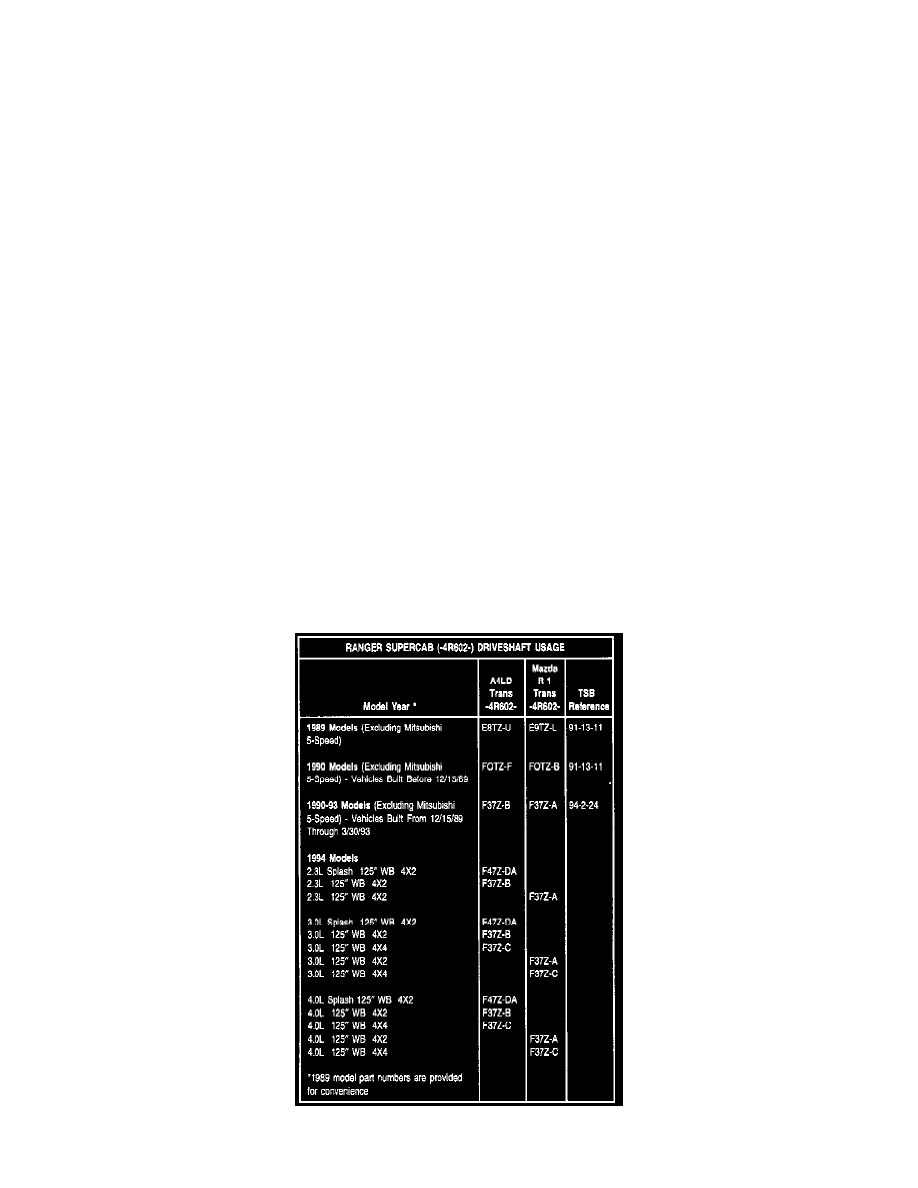Ranger 2WD V6-182 3.0L (1995)

^
Driveline vibration can exist in all drive modes, but may exhibit different symptoms depending upon whether the vehicle is accelerating,
decelerating, floating or coasting. If the vibration is particularly noticeable during acceleration or deceleration, especially at lower speeds, then
driveline angle should be checked.
^
Driveline vibration can be duplicated by supporting the axle upon a hoist or upon jackstands, though the brakes may need to be applied lightly in
order to simulate road resistance. Refer to the 1997 Ranger Service Manual, Page 05-00-15, Steps 1-10.
Driveshaft Runout and Balance
Vibration or shudder which is noticeable either on fast acceleration, when coasting, or when using the engine for braking, may be caused by the rear axle
housing being loose on the rear suspension, improper tire balance, improper driveline installation, or driveline balance.
If driveshaft components are replaced and shaft vibration is encountered after installation, disconnect and remove the driveshaft. Rotate the rear axle
companion flange 180 degrees; then, reconnect the driveshaft to the driveshaft slip yoke and reinstall in vehicle. If the vibration persists, disconnect the
driveshaft at the rear axle companion flange. Rotate the rear axle companion flange 180 degrees and reconnect the driveshaft to the rear axle companion
flange.
If rotating the driveshaft 180 degrees does not eliminate vibration, the driveshaft may be balanced by referring to the 1997 Ranger Service Manual, Page
05-00-29, Steps 1-9, for details.
Slip-Yoke Spline
Vehicle noise and vibration can be caused by a seized driveshaft slip yoke spline. The service resolution to minimize driveshaft slip-yoke spline
contamination and ultimate seizure can be found in the 1997 Ranger Service Manual, Page 05-00-32, Steps 1-11.
Driveline Angularity
Driveline angularity is the angular relationship between the engine crankshaft, the driveshaft and the rear axle pinion. Factors determining driveline
angularity include ride height (rear spring) and engine mounts.
Low speed vibration, less than 72 km/h (45 mph), especially when the vehicle is subjected to heavy acceleration or deceleration, is an indication of
improper driveline angles. When these conditions exist, check the universal joints for proper seating, mounting and operation.
Center Bearing, Supercab 4X2 and 4X4
